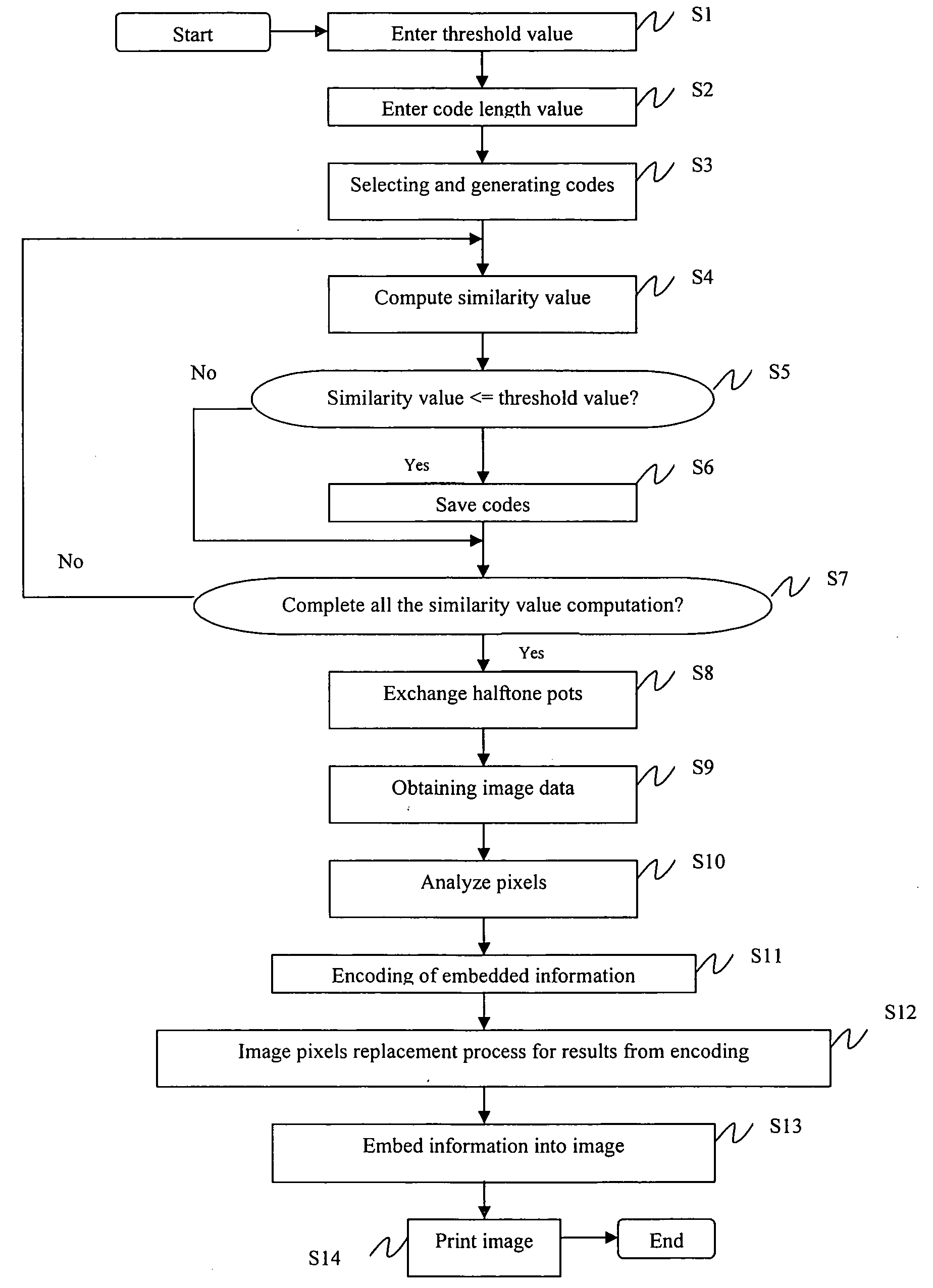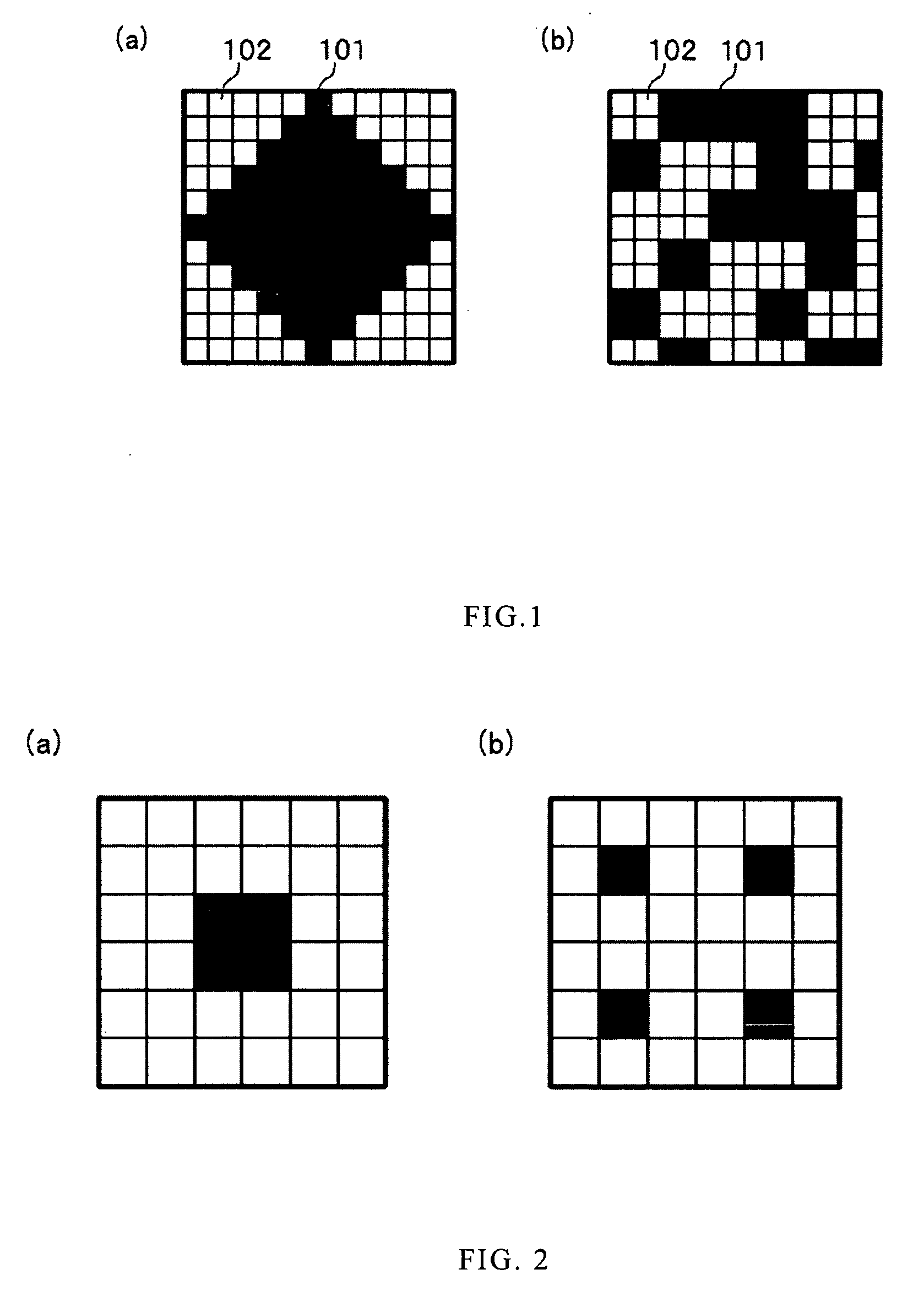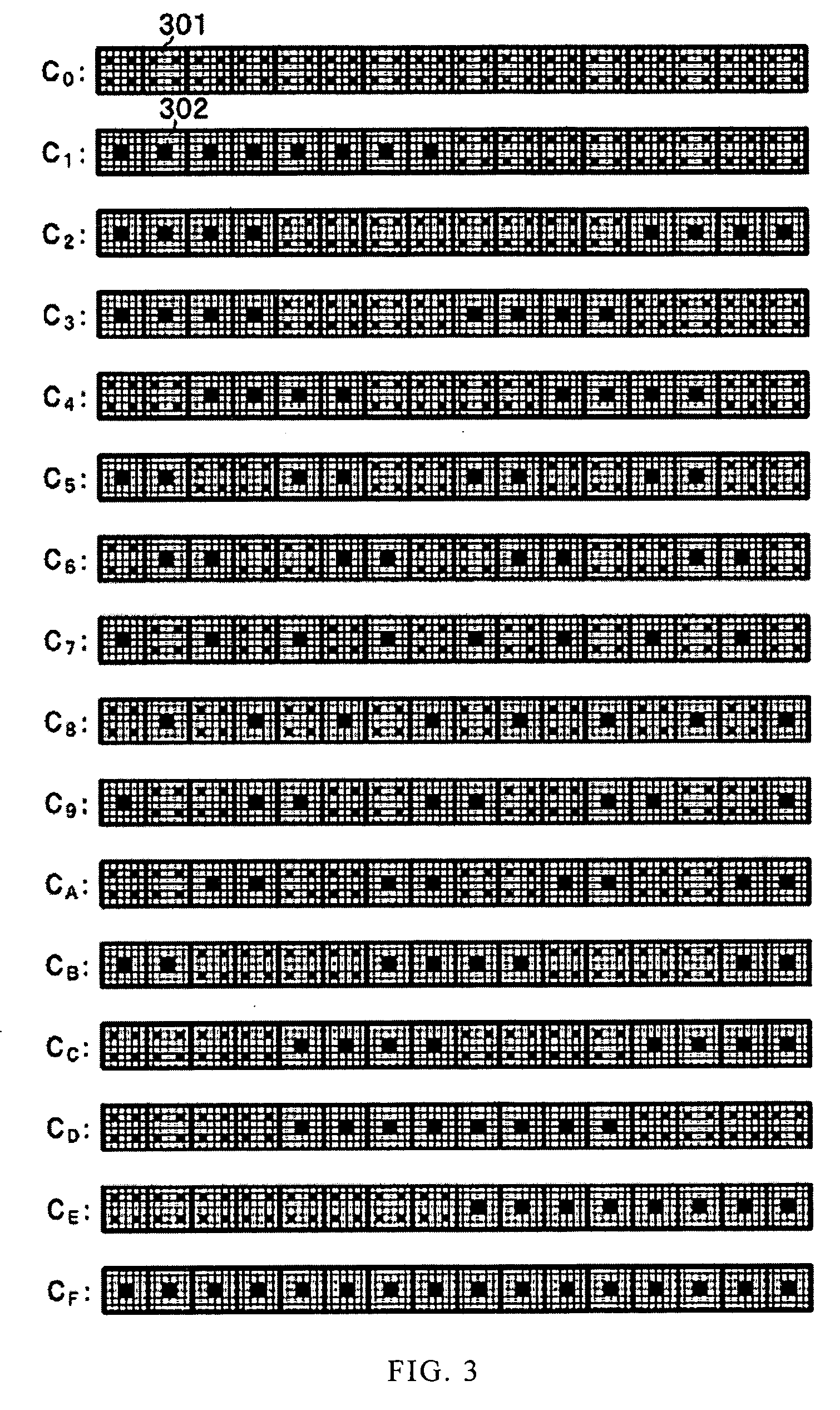Embedding computer information into printed media and process method thereof
a technology of computer information and printed media, applied in the field of information embedding halftone screen encoding system, can solve the problems of deteriorating the quality of original images, introducing many stochastic noises, affecting the recognition rate, and low efficiency of information recording, so as to improve the decryption and storage performance of halftone screen code, high value, and the effect of maintaining robustness
- Summary
- Abstract
- Description
- Claims
- Application Information
AI Technical Summary
Benefits of technology
Problems solved by technology
Method used
Image
Examples
embodiment 1
[0166] Embodiment 1
[0167] Table 2 gives the error rates of the implementation example. 1100110011001100 and 0011110011001100, with a similarity value between codes equals to ½, are repeatedly embedded. At the same time, the detecting error rates are calculated for 160 halftone dots with 10% interference, 320 halftone dots with 20% interference and 640 halftone dots with 40% interference. And the results are listed in the following table with units in %.
interferencetrialsratio (%)123456100.100.10.100.06201.11.11.10.91.11.1405.14.85.14.64.64.84
embodiment 2
[0168] Embodiment 2
[0169] Table 3 gives the error rates of the implementation example. 1100110011001100 and 0011110011001100, with a similarity value between codes equals to ¼, are repeatedly embedded. At the same time, the detecting error rates are calculated for 160 halftone dots with 10% interference, 320 halftone dots with 20% interference and 640 halftone dots with 40% interference. And the results are listed in the following table with units in %.
interferencetrialsratio (%)12345610000000200.10.10.10.10.10.1402.72.62.632.82.74
embodiment 3
[0170] Embodiment 3
[0171] Table 4 gives the error rates of the example for comparison. 1100110011001100 and 0011110011001100, with a similarity value between codes equals to 0, are repeatedly embedded. At the same time, the detecting error rates are calculated for 160 halftone dots with 10% interference, 320 halftone dots with 20% interference and 640 halftone dots with 40% interference. And the results are listed in the following table with units in %.
interferencetrialsratio (%)123456100000002000.10.100.10.06401.91.91.621.61.8
[0172] As shown in the implementations above, when the halftone dots undergo interference, the lower the similarity between codes, the smaller the detecting error rate; verse vice. It is clearly seen that the detecting error rate is very small when the similarity value is below ½.
PUM
 Login to View More
Login to View More Abstract
Description
Claims
Application Information
 Login to View More
Login to View More - R&D
- Intellectual Property
- Life Sciences
- Materials
- Tech Scout
- Unparalleled Data Quality
- Higher Quality Content
- 60% Fewer Hallucinations
Browse by: Latest US Patents, China's latest patents, Technical Efficacy Thesaurus, Application Domain, Technology Topic, Popular Technical Reports.
© 2025 PatSnap. All rights reserved.Legal|Privacy policy|Modern Slavery Act Transparency Statement|Sitemap|About US| Contact US: help@patsnap.com



